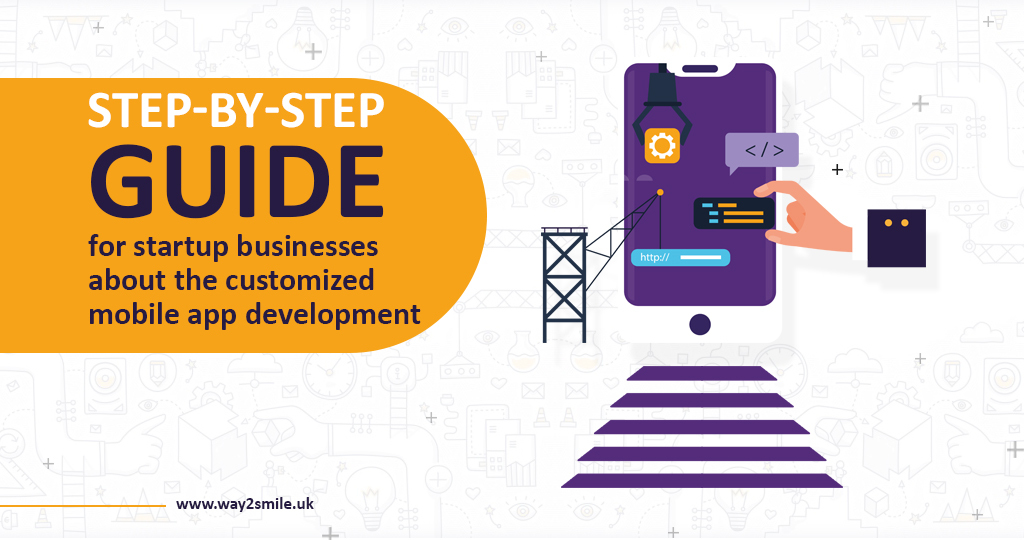
The complete step-by-step guide for startup businesses about the customized mobile app development process and benefits.
Mobile applications are the present profitable option for business owners. If you have a creative idea, there are greater chances of success in society. A brilliant idea can kick-start your business and make you stand out from the crowd!
So, if you are fond of developing a customized mobile application, this blog is a must-read for you! We have discussed the steps of creating a mobile application in a tailor-made way along with the benefits of building an application.
The complete guide mobile app development process and its benefits:
1. Coming up with a unique idea
![]()
Right off the bat, every business requires a great idea. So, here are the major questions for which you should have answers in order to make a decision that your app idea isn’t wrong rather is best and worth investing in!
- Why do you want to build this application?
- Is it a real need for your business?
- Is your idea a great fit for your target audience? Do you have resources to develop & promote it?
- Who is your target audience?
- What are the features you are looking to integrate in your app?
- Why should your target audience use your application?
- Who are your competitors?
- How do you stand out from them?
- An app development process would require enough money, cost, and resources. Are you ready for it?
- When and how will you promote your app?
- What strategies will you use?
2. Market Research

Researching the current market is crucial before getting into investment. This can show you a clear demand or interest of the market. In accordance with that, you can modify your idea, and research the things which are the present requirements, and prioritize them.
So, here is how you should get started with the market research process:
- Define your objectives and custom ones.
- Come up with research survey questions.
- Figure out the portion of that persona to engage.
- Communicate with people in every part of your target customer’s business.
- Produce an informative survey.
- List down your market competitors and perform a desk survey.
There are a plethora of advantages when you do market research. Here are some of them:
- You can start maintaining a good understanding of your customers.
- You will get a clear idea about your competitors.
- You can get to know a complete picture of your application.
- You can identify different business opportunities.
- You can find a perfect way to reach your customers.
- Get your feature list checked and figure out whether your target customers would be interested in additional ones.
Read Also – How a Custom Mobile App can take your Business to New Heights in 2021?
3. Initiating wireframes
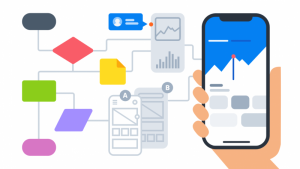
At this stage, you can start converting your idea into wireframes. This can be a blueprint of your application. It will display the design and functionality of your application. Added, you can also understand the look and feel of your application. There are plenty of Wireframe tools available in the market such as Invision, UXPin, Fluid UI, Proto.io, Prott, etc which you can use based on your convenience.
In order to create wireframes, here are a few steps which you need to consider:
- Map out the user flow of your application by knowing the client requirements and drafting solutions accordingly.
- Setting up a mobile frame that exactly looks with the dimensions of your device be it an Android or an iOS application.
- Make use of design patterns with familiar patterns. Familiar patterns create a good user experience for your customers.
- Ensure that your content scales well without any issues in the corresponding design according to the size.
- Design Sprints are important to avoid dilemmas between the designed frames. It can be useful in creating a new product or service, redesign an existing one, integrating additional features to the existing design.
4. Choosing a platform
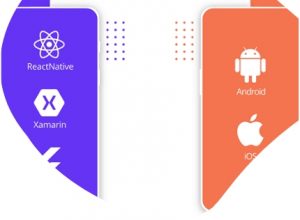
There are multiple mobile app platforms available in the market. You need to determine the one which will suit your needs. Here are the three popular mobile app platforms which are ruling the world:
- Native App: With the support of different languages and tools, developers can offer Custom Mobile App Development for Startups and other enterprises in specific platforms such as Android, iOS.
- Cross-Platform App/ Hybrid App: Single mobile application built on HTML5 and can be run on various platforms. They are downloaded from all the app and play stores similar to native applications.
- HTML5 Web App: This is an optimized website that appears on native apps and runs on the mobile browser. It is a platform-independent one and can be useful in cases where either the application is not allowed by respective app stores or end users are not expected to be motivated to download the app.
5. Development Process
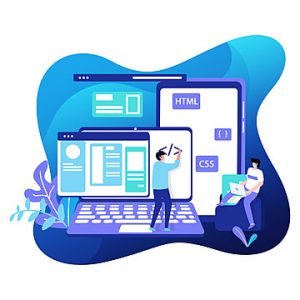
Now you have a design and platform ready. To give a proper structure to your dream project, you can get started with the development process. It covers the coding part of the application which comes in multiple stages such as appropriate development environment, developing various parts of the code, preliminary testing, and creating an app that can be installed and tested.
In this stage, there are three major aspects involved:
- Back-End/ Server Technology: Database and Server-side objects are the major supporting functionalities of your mobile app by connecting to a network.
- Application Programming Interface (API): It consists of practices, protocols, and tools for developing a software application. It is used while programming GUI Components.
- Mobile App Front-End: This “client-side” programming is what your app users interact with. This is the step where the required structure, design, animation, behavior which you see on the screen appears. You can get in touch with Way2Smile, a Mobile App Development Company, in this case, to get started with the process.
6. Testing for enhancements
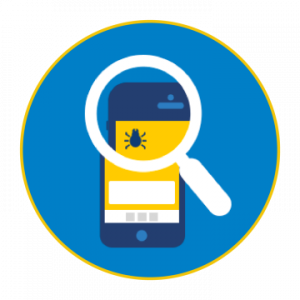
It is extremely important to launch an application that is free from bugs. This is where Testing plays a major role. By reviewing the code, there are chances that 90% of software quality gets improved which can also help businesses in saving money, time, and effort.
Here are the various Testing stages which you should follow:
- Documentation Testing: Initial testing stage to check for all the wanted features and if any discrepancies are found, they are resolved.
- Functional testing: As the name suggests, it is responsible for testing the mobile application response. One needs to consider the business industry of the application, the target audience, and the distribution channel like Google Play, App Store, etc.
- Usability Testing: This part ensures that the app offers a convenient browsing environment and creates an intuitive user interface for your customers. Here you can check for user satisfaction, efficiency, and effectiveness of the application.
- User interface testing: The graphical user interface is tested to meet the required specifications.
- Compatibility testing: It tests the compatibility or configuration of the application according to the size, version, hardware, screen resolution, etc. It also takes care of OS, Browsers, Database, Device, Network, etc.
- Performance testing: It can help you to check whether the application can work under specific challenges such as Load testing, stress testing, stability testing, volume testing, concurrency testing, etc.
- Security testing: It is performed to enhance the security of the app. It also checks for risks and hacking possibilities and resolves them.
- Certification testing: It is to make sure that the app meets the industry standards and license agreements.
Read Also – Simple Guide on how to construct a Mobile App with accurate icons for a successful business
7. Launching a beta version of the application
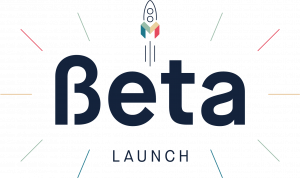
A beta version can attract early adopters which is crucial. You can get feedback on pros and cons from them which can be further implemented. You can check their experience and get their ratings that can help you understand the present customer needs.
8. Launching your application

Now you have your application ready. It is time to launch on any platforms such as Google Play, App Store, Windows, etc!
So, here are the ways you can submit your application to these platforms:
App Store:
- Creating an iOS profile & distribution certificate.
- Create an iTunes Connect record.
- Archive & upload your application by Xcode.
- Configure your mobile app’s metadata and other information.
- Submit them for review.
- Check for the status.
Google Play Store:
- Get your mobile app information ready.
- Upload the APK or mobile app bundle files of your app.
- Set up your mobile app’s content rating.
- Set app’s pricing.
- Set a distribution plan.
- Publish your app.
9. Marketing them
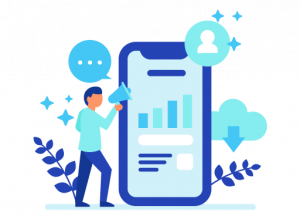
Finally, you have created and launched your app! Now it is time for your customers to know about them. If they aren’t aware of it, there won’t be any chances of downloading it. This is where you need to start app marketing by creating attractive videos and spread them on various channels to cover the audience.
Read Also – A complete guide to outsource Mobile App Development in 2021
Conclusion:
These stages may look complex and tedious! Yes, developing a fully-featured app is not an easy task. However, we people have professional mobile app developers who offer Mobility Solutions for Startups as well as Enterprises irrespective of how challenging it may be!
